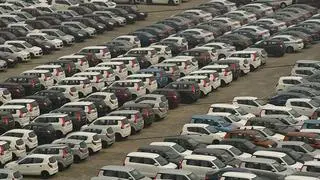Retail inflation based on Consumer Price Index (CPI) for rural areas is higher than urban areas for four successive months with West Bengal, Madhya Pradesh, Telangana and Haryana recording double-digit rural retail inflation in April.
These are among the 17 States that witnessed higher retail inflation in rural areas. However, in Karnataka, Kerala, Bihar, Himachal Pradesh and Delhi, urban inflation beats rural inflation.
Steady uptick
An analysis of the inflation data shows retail inflation for rural areas surged to 8.38 per cent in April as against 7.66 per cent in March, and 3.75 per cent in April last year. Delving into rural inflation, research firm CareEdge underlined in a note that the spike in CPI inflation has been more pronounced in rural India as that basket gives more weightage to food items.
As a result, rural inflation has been outpacing urban inflation since January 2022. “This could have implications on rural demand, which is yet to show a healthy pickup. Urban inflation has also been inching upwards for the past two months, which reflects the building of core pressures in the economy,” the CareEdge note said.

According to Yuvika Singhal, economist with Quanteco, one reason for high rural inflation is higher weight of food and fuel in rural CPI basket (at 54 per cent and 8 per cent as against 36 per cent and 5.6 per cent in the urban basket). Food price pressures have mounted amid war-driven spillover on commodities such as wheat, oilseeds, animal feed either directly and indirectly (via dairy, meat and fish, prepared meals and snacks, etc.). Upward adjustment in petrol and diesel prices is also getting reflected in domestic retail inflation, more so in rural inflation.
Higher clothing inflation
Clothing and footwear as a category has also witnessed stronger inflation in rural areas. In 2022, urban inflation in this category has averaged at 7.9 per cent while rural inflation has surged to 10.1 per cent. “While this underscores a stronger opening up of rural economic activities, it is also worrisome as inflation in clothing and footwear category is seen to display the highest level of persistence historically (relative to other inflation sub-categories),” Singhal said.
Sunil Kumar Sinha, Principal Economist with India Ratings & Research (Ind-Ra), said the cost of providing manufactured goods and some services in the rural areas is higher than in urban areas due to accessibility and economies of scale. “Data reveal that clothing inflation has been higher in rural areas. The same holds true for footwear and personal care products,” he said.
Dharmakirti Joshi, Chief Economist with CRISIL, estimates bottom 20 per cent of income segment in rural areas to have faced inflation of 8.5 per cent in April, compared with 8.3 per cent for the upper 20 per cent.








Comments
Comments have to be in English, and in full sentences. They cannot be abusive or personal. Please abide by our community guidelines for posting your comments.
We have migrated to a new commenting platform. If you are already a registered user of TheHindu Businessline and logged in, you may continue to engage with our articles. If you do not have an account please register and login to post comments. Users can access their older comments by logging into their accounts on Vuukle.